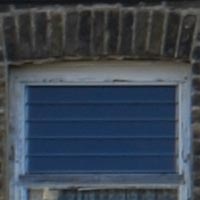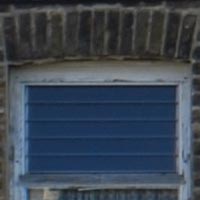Nikon D40x Review
Review Date: November 7th 2007
Leave a comment about this Review
|
Image Quality
All of the sample images in this Review were taken using the 10M Fine JPEG mode, which gives an average image size of around 2.5Mb.
Noise
There are 6 ISO settings available on the Nikon D40x which you can select at any time if the camera is in any shooting mode. There is virtually no discernible noise at the slowest settings of ISO 100, 200 and 400. Noise is starting to appear at ISO 800, bit it is still quite well controlled even at ISO 1600. As you might expect, a lot of detail is lost at the fastest speed of ISO 3200, with the images having a "painted" feel, but they are still perfectly useable for small print sizes. An excellent performance by the Nikon D40x. Here are some 100% crops which show the noise levels for each ISO setting.
ISO 100 (100% Crop) |
ISO 200 (100% Crop) |
 |
 |
ISO 400 (100% Crop) |
ISO 800 (100% Crop) |
 |
 |
ISO 1600 (100% Crop) |
HI 1(100% Crop) |
 |
 |
Sharpening
Here are two 100% crops which have been Saved as Web - Quality 50 in Photoshop. The right-hand image has had some sharpening applied in Photoshop. The out-of-the camera images at the Standard setting are soft and benefit from some further sharpening in a program like Adobe Photoshop. Alternatively you can change the in-camera sharpening level one of the six presets if you don't like the default results.
Original
(100% Crop)
|
Sharpened (100% Crop) |
 |
 |
 |
 |
File Quality
The Nikon D40x has 3 different file quality settings available, with Fine being the highest quality JPEG option. Here are some 100% crops which show the quality of the various options, with the file size shown in brackets.
|
10M
Fine (4.19Mb) (100% Crop)
|
10M
Normal (2.26Mb) (100% Crop)
|
 |
 |
|
10M
Basic (1.16Mb) (100% Crop)
|
|
 |
|
Chromatic Aberrations
The Nikon D40x's 18-55mm kit lens handled chromatic aberrations well, with some limited purple fringing evident in areas of high contrast, as shown in the examples below.
|
Chromatic
Aberrations (100% Crop)
|
Chromatic
Aberrations (100% Crop)
|
 |
 |
Macro
The Nikon D40x offers a Macro scene mode, but as the D40x is a digital SLR it's the 18-55mm kit lens that determines how close you can get to the subject, not the camera body. The first image shows how close you can get to the subject (in this case a compact flash card). The second image is a 100% crop.
|
Macro Shot |
Macro Shot (100% Crop) |
 |
 |
Flash
The flash settings on the Nikon D40x are Fill flash, Rear-curtain with slow sync, Slow sync, Slow sync with red-eye reduction, and Red-eye reduction. These shots of a magnolia coloured wall were taken at a distance of 1.5m.
|
Flash Off - Wide Angle (27mm) |
Auto Flash - Wide Angle (27mm) |
 |
 |
|
Flash Off - Telephoto (82mm) |
Auto Flash - Telephoto (82mm) |
 |
 |
And here are some self-portraits. As you can see, neither the Fill Flash setting or the Red-Eye reduction option caused any red-eye.
|
Flash On |
Flash On (100% Crop) |
 |
 |
|
Flash - Red-Eye Reduction |
Flash - Red-Eye Reduction (100% Crop) |
 |
 |
Night Shot
The Nikon D40x's maximum shutter speed is 30 seconds and there's also a Bulb option for longer exposures, which is great news if you're seriously interested in night photography. The shot below was taken using a shutter speed of 20 seconds, aperture of f/11 at ISO 100. I've included a 100% crop of the image to show what the quality is like.
|
Night Shot |
Night Shot (100% Crop) |
 |
 |
Overall Image Quality
The Nikon D40x produced images of excellent quality during the review period. The 10 megapixel images are slightly soft straight out of the camera and ideally require some further sharpening in an application like Adobe Photoshop, or you can change the in-camera sharpening to one of six different levels. The Nikon D40x handled chromatic aberrations well, with limited purple fringing effects appearing only in very high contrast situations. Macro performance was below average with the supplied 18-55mm lens, although with this camera being a DSLR you could always treat yourself to a dedicated macro lens. The built-in flash worked well indoors with no red-eye and good overall exposure. The night photograph was excellent, with the maximum shutter speed of 30 seconds and the Bulb mode offering lots of scope for creative night photography. The Nikon D40x's most impressive feature in terms of image quality, especially given the new 10 megapixel sensor, is the extensive and very usable ISO range of 100-3200. ISO 100-800 is virtually noise-free, whilst ISO 1600 produces acceptable results, and even ISO 3200 is OK for small print sizes. This makes the Nikon D40x a great camera for low-light photography without having to resort to using the flash, which in turn can produce more natural results.
|
![]() PhotographyBLOG
is a member of the DIWA
organisation. Our test results for the Nikon D40x have been
submitted to DIWA
for comparison with test results for different samples of
the same camera model supplied by other DIWA
member sites.
PhotographyBLOG
is a member of the DIWA
organisation. Our test results for the Nikon D40x have been
submitted to DIWA
for comparison with test results for different samples of
the same camera model supplied by other DIWA
member sites.
